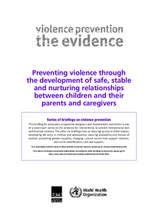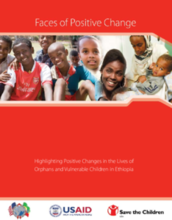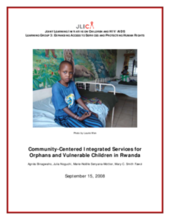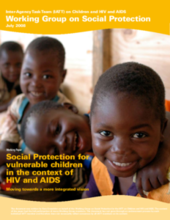Displaying 211 - 220 of 308
Documents the strategies of The Positive Change: Children, Communities and Care (PC3) Program - a five-year (2004-2009) integrated and comprehensive program designed to provide care and support to more than half a million orphaned and vulnerable children and their families throughout the country of Ethiopia.
This briefing looks at the effectiveness of interventions that encourage safe, stable and nurturing relationships for preventing child maltreatment and aggressive behaviour in childhood. The focus is on primary prevention programmes, those that are implemented early enough to avoid the development of violent behaviour such as child maltreatment and childhood aggression.
This study assesses the development, social integration and post-return reintegration issues facing child victims of trafficking and migration related exploitation in shelters and orphanages in Cambodia.
This module on community mobilisation has been developed as a resource for those humanitarian and emergency workers whose engagement with child protection, brings them into contact with communities.
Highlights successes and lessons learned from the PC3 Program. Serves as a companion piece to the Toolkit for Positive Change
In 2006 the Indian Ministry of Women and Child Development proposed the adoption of an Integrated Child Protection Scheme (ICPS), which was adopted and launched by the central government in 2009-2010. Recognizing chronic under funding of child protection services in the country and major gaps in the system, the ICPS was expected to significantly contribute to the realization of Government/State responsibility by creating a system that would effectively and efficiently protect children.
The overall goal of this case study is to provide in sufficient detail the process that follows from initial ideas/ vision, government policy development, the creation of national strategic plan of action, local (district-level) program and work plan development, and ultimately program implementation, including monitoring and evaluation (M&E).
Discusses the crucial need to address social vulnerability, in addition to economic vulnerability, when formulating social protection strategies
The impact of pensions on the lives of older people and grandchildren in the KwaWazee project in Tanzania’s Kagera region.
A qualitative study of children living with grandmothers in the Nshamba area of northwestern Tanzania










